The jaguar is a big cat and the only member of the Panthera genus (lion, tiger, jaguar, leopard, and snow leopard) found in the Americas. It is larger than the leopard and snow leopard but smaller than the lion and tiger. The jaguar can be found in the southwestern United States (rarely), Mexico, and across most of Central America. Its range continues well into South America, Paraguay, and northern Argentina.
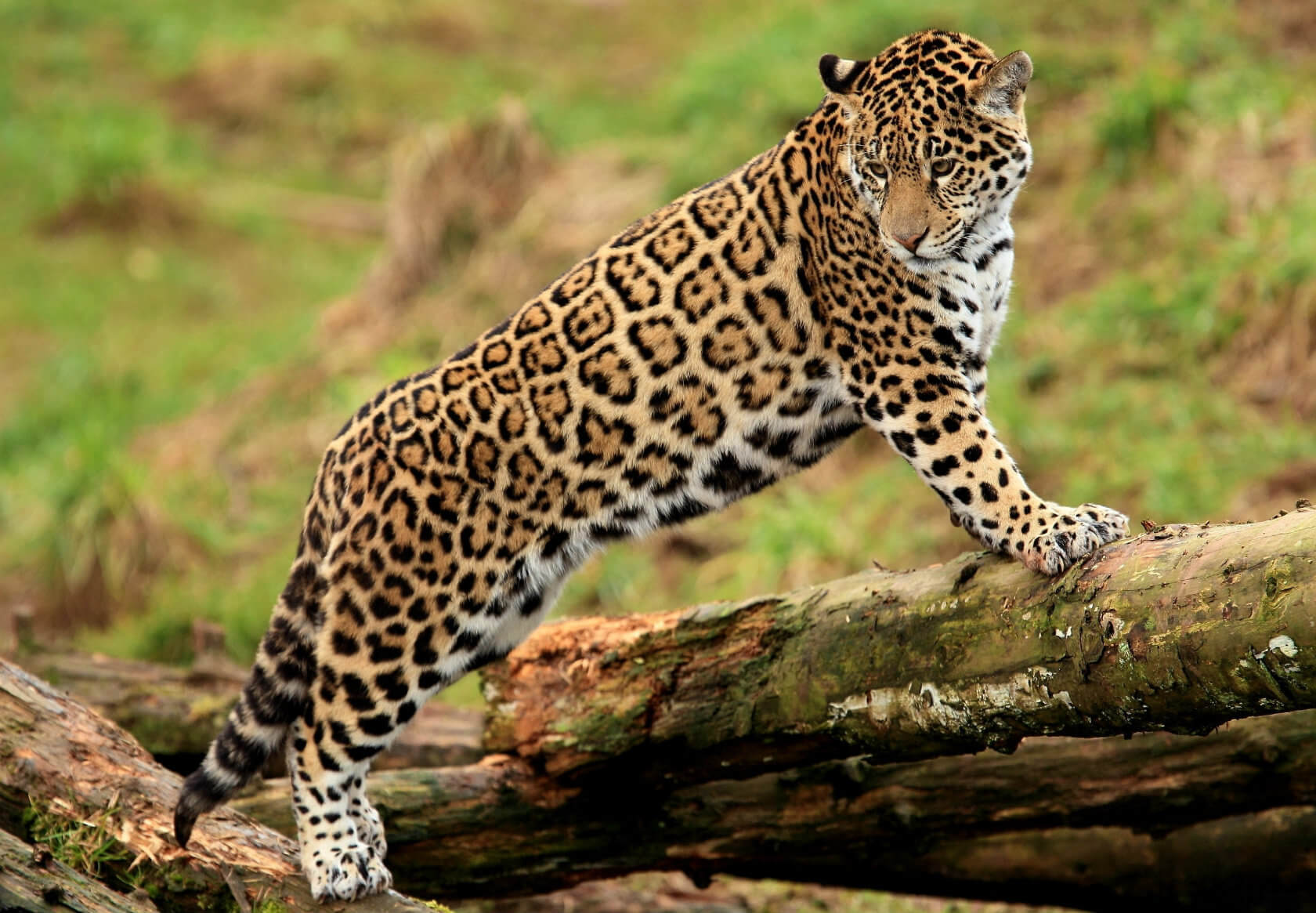
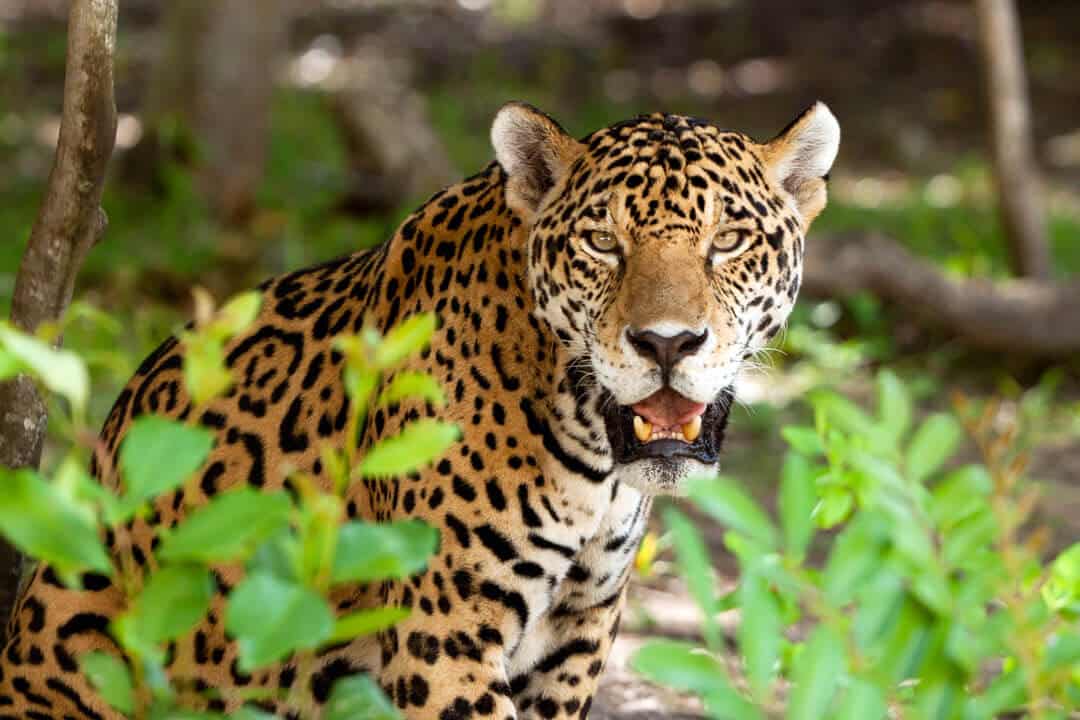
Scientific Name: Panthera onca
Conservation Status: Near Threatened
Subspecies: According to recent assessments, there are no jaguar subspecies. However in 2024 two subspecies were proposed: Panthera onca augusta and Panthera onca mesembrina.
Lineage: The jaguar is a member of the Panthera lineage, along with the lion, tiger, leopard, and snow leopard. There are two genera in this lineage: Panthera and Neofelis.
Meaning of the name: Possibly from the Tupi (indigenous Brazilian people) word yaguara, which means “beast of prey”. Also from Portuguese jaguar (yaguareté),
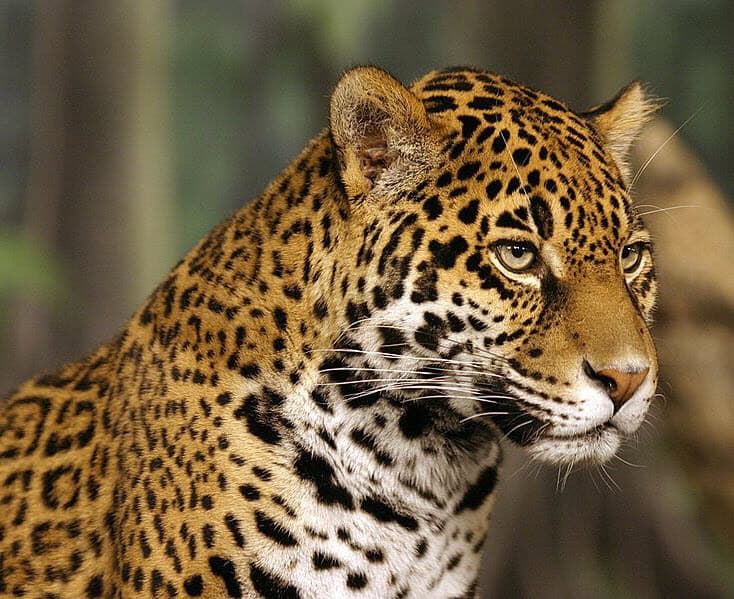
Interesting jaguar facts
- Largest wild cat in the Western Hemisphere
- One of the four big cats that can roar.
- Third largest cat in the world.
- Loves bathing and swimming in water.
- Has the strongest jaw and bite of all the wild cats.
- It can kill by piercing the bones of the skull between the ears
- They have a very broad diet, preying on an estimated 85 different species.
- Their tails are considered short for a big cat.
- Jaguars look like leopards, but have a smal dark spot in the middle of their rosettes (rose-shapped spots).
More about jaguars
Jaguars are one of the largest cats in the world. They can be found in Central and South America, including the Amazon jungle.
Origin and History
The jaguar has been an American cat since crossing the Bering Land Bridge during the Pleistocene epoch.
Jaguars once roamed most of North America. Fossils from the last Ice Age, about 25,000 years ago, have been found as far north as Missouri.
Constantly pushed southward by various factors, jaguars can now be found only in Arizona, New Mexico, and Texas and from Mexico to Patagonia.
Only an estimated 15,000 jaguars are in the wild in Mexico, Central and South America. Conservation efforts between the United States and Mexico have successfully protected a small population of cats in the mountains of Sonora, Mexico.
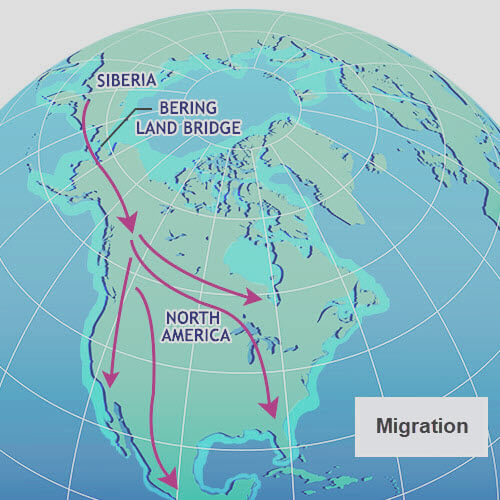
Physical Appearance
The cat is covered in rosettes for camouflage in its forest habitat. The spots vary between individual jaguars. Rosettes may include one or several dots, and the shapes of the dots vary. The spots on the head and neck are generally solid, as are those on the tail, where they may merge to form a band.
Physically, with its spotted coat, the jaguar resembles the leopard, except that it is larger, stronger, and more muscular. Its fur is normally yellow and tan, but it can vary from reddish brown to black. A near-black form occurs regularly. Jaguars with dark pigmentation of the fur appear entirely black, although their spots are still visible on close examination. On all jaguars, the spots on the coat are more solid and black on the head and neck and become larger rosette-shaped patterns along the side and back of the body.
Jaguar Behavior
Sounds
Lions, tigers, leopards, and jaguars are the only cats that can roar. The sound is produced by a specialized larynx and flexible bone in its throat and can be used to stake territory, communicate generally, or express anger.
Location and Habitat
The jaguar can be found from Mexico to South America. This large wild cat prefers life in a dense rainforest but will also live in open terrains, deciduous forests, swamps, grasslands, and mountain scrub areas.
Jaguars love the water and will bathe, swim, play, and hunt to catch fish in pools or creeks.
Hunting and Prey (diet)
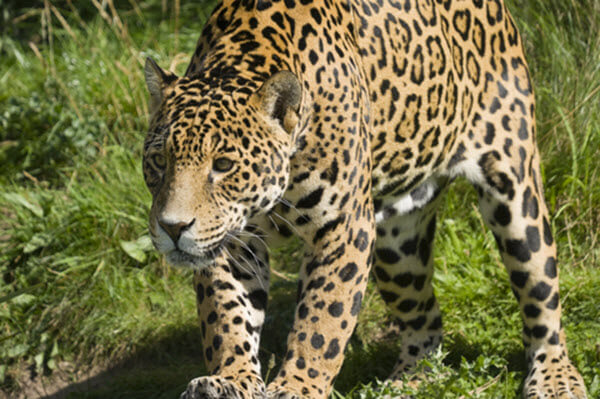 With no predators, the jaguar is at the top of the food chain where it lives. The jaguar prefers stalking and ambushing its prey.
With no predators, the jaguar is at the top of the food chain where it lives. The jaguar prefers stalking and ambushing its prey.
The cat’s ambushing abilities are considered nearly peerless in the animal kingdom by both indigenous people and field researchers.
Its exceptionally powerful jaw structure gives the jaguar the strongest bite force of all big cats, enabling it to penetrate armored reptile shells and the hardened skulls of other, larger animals.
Unlike other cats, it can kill with a fatal bite between the ears, directly into the brain. The ambush may include leaping into water after prey, as a jaguar is quite capable of carrying a large kill while swimming; its strength is such that large kills can be hauled up a tree to avoid flood levels.
In the food chain, the jaguar plays a vital part in stabilizing ecosystems and keeping in check the populations of the animals within its range, which this adept hunter depends on for its survival.
Jaguars are known to eat armadillos, birds, cattle, crocodiles, deer, eggs, fish, frogs, heifers, horses, mice and other rodents, monkeys, peccary, sloths, snakes, tapirs, turtles, and anything else they can catch, up to 87 different species of animal and reptile food sources.
Reportedly, while hunting horses, a jaguar may leap onto their back, place one paw on the muzzle and another on the nape, then twist, dislocating the neck. With smaller prey, such as monkeys or wild dogs, a paw swipe to the skull may be sufficient to kill it.
Reproduction and Lifespan
Once old enough to leave its mother (12 to 24 months), a jaguar tends to live a solitary life as an adult, primarily comfortable on its own. Typical lifespan in the wild is estimated at around 12–15 years; in captivity, the jaguar lives up to 23 years, placing it among the longest-lived cats.
Jaguar Conservation Issues
Whereas the jaguar is nearly completely gone from the United States, it still exists in Mexico, Central and South America but is now extinct in El Salvador and Uruguay. Elsewhere, jaguar populations are rapidly declining.
The big cat is considered Near Threatened by the International Union for Conservation of Nature and Natural Resources, meaning it may be threatened with extinction in the near future (see scale below). Loss and fragmentation of habitat are major threats to the Jaguar. International trade involving jaguars or their parts is illegal, but the cat is still frequently killed by ranchers and farmers in South America attempting to prevent jaguars from hunting their stock. And poaching hasn’t stopped, nor is it prohibited in every country.
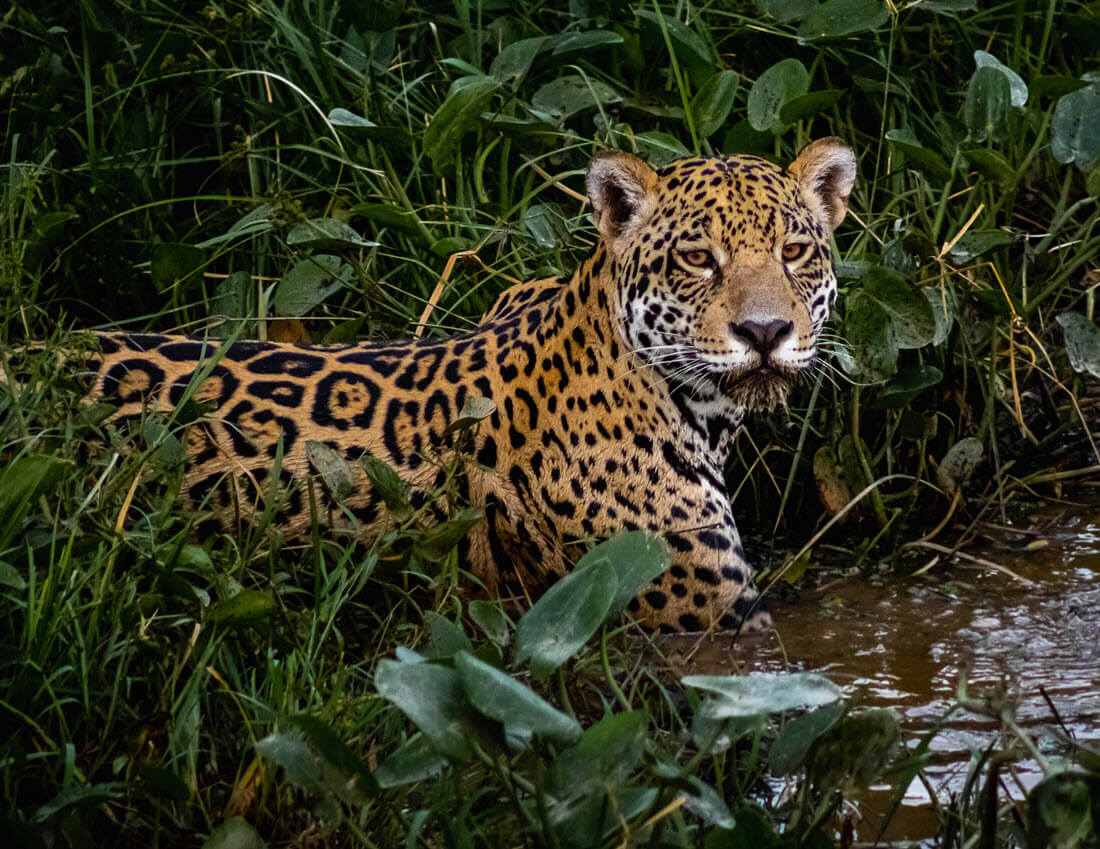
Jaguars in Culture
Since ancient times, jaguars have played a significant role in North (Mexico), Central, and South American culture. They appeared as gods in all Mesoamerica cultures (a historical region and cultural area starting in central Mexico, down through Central America, and territories that are now the countries of Guatemala, Belize, Honduras, and El Salvador, and are prominently featured in folklore, mythology, art, literature, beliefs, and rituals.
Jaguars are symbols of power, royalty, the military, courage, and fertility. They are also associated with the underworld.
Power: In Aztec and Mayan culture, the jaguar symbolized the power of rulers.
Royalty: Jaguar images were frequently seen in palaces and temples. Mayan rulers were named “b-alam,” a Mayan word meaning jaguar. The Mayans believed the jaguar could protect the royal family.
Military: The “jaguar warrior” was an elite fighting group of the Aztecs.
Religion: The jaguar was a god throughout Mesoamerican culture. The Maya, Aztec, Almec and Inca carved jaguar images into their temples. Jaguars were often the companion spirit of powerful shamans, who were believed to become jaguars during ceremonies. Several Mayan temples at the Lamanai archeological site in Belize are covered with angular jaguar heads.
Dance: Danza de Los Tecuanes (Dance of the Jaguar) is a Mexican dance that tells the story of a man-eating beast that stalks and kills several domestic animals with a whip. The Lord of the Mountain is called on to help overpower the Tecuán (jaguar).
Underworld – It was believed the jaguar could communicate between the living and the dead. Images of the jaguar were often placed on burial urns containing honored ancestors’ bones.
Fertility: The jaguar symbolizes vegetation and fertile land (the Mayan “Waterlilly jaguar”).
Beliefs: Some indigenous Peruvian cultures consider the jaguar the sun. The Waoranis (an indigenous people from the Amazon region) believe jaguars watch over other species. The Kichwas (an indigenous people mainly inhabiting the Ecuadorian Amazon region) believed spirits became jaguars. The Bororo (Bolivia/Brazil) associated the jaguar with the spirit world, and the Matses on the Peru-Bolivia border consider the jaguar a strong warrior. According to one myth, the jaguar was once an ordinary animal the gods chose to be their messenger on Earth.
Image: A Moche Valley (northern Peru) vessel depicting a sacrificer wearing a jaguar headdress (100 BCE – 500 CE).
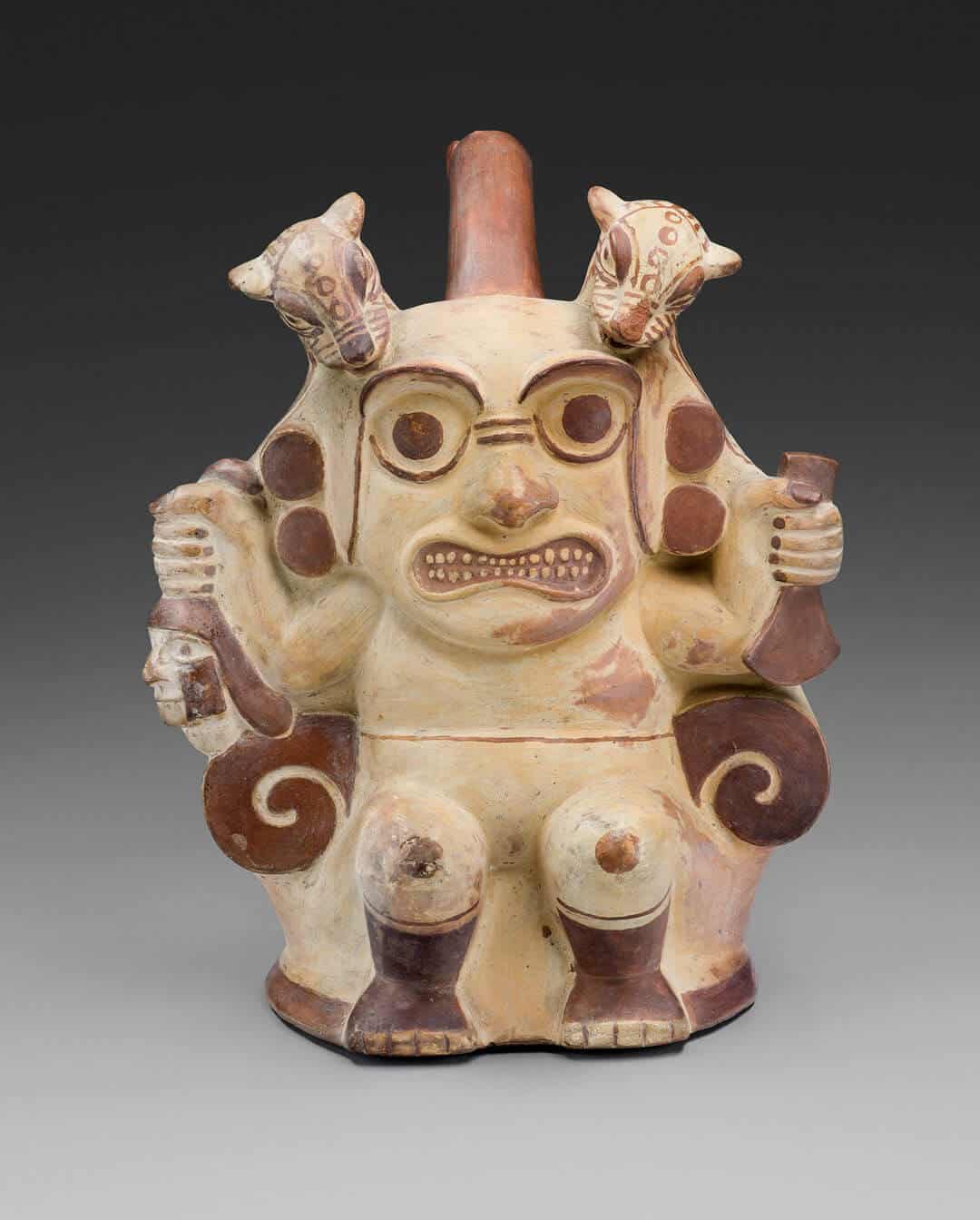
Image: Mayan art – jaguar bowl.
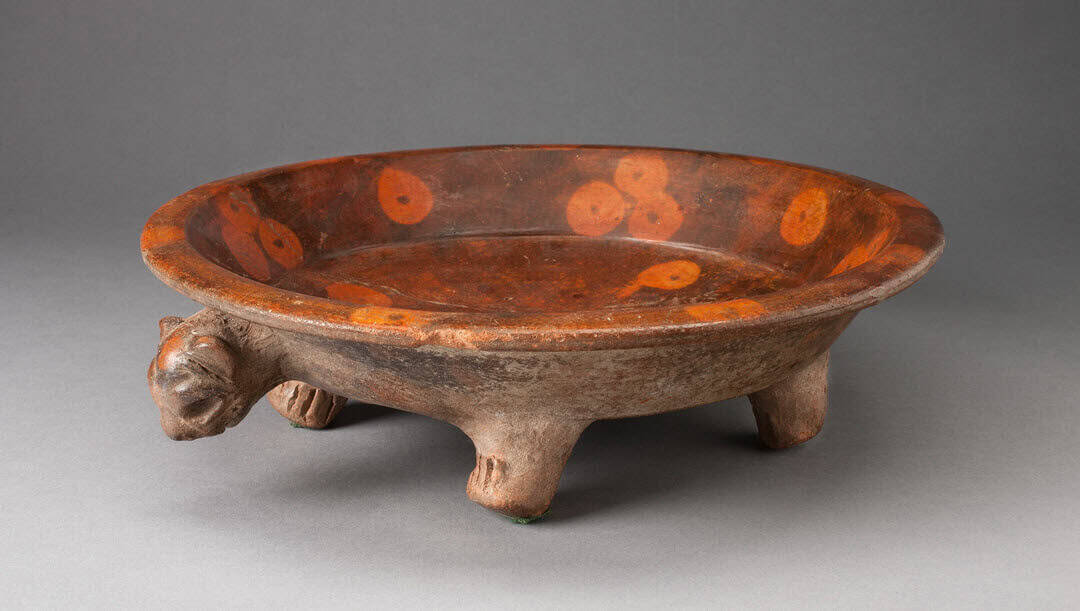
Jaguar Research Quotes
“..livestock predation was found to be related to the abundance and availability of natural prey and the distance of ranches from the jaguar habitat.” – 2023 Jaguar (Panthera onca) food resource use and its interaction with humans: scoping review \ Rubio | Camacho, et al.
(Def. predation – the preying of one animal on others.)
“From Arizona to Northern Argentina, the jaguar “accommodates” its behaviour to survive in a large variety of habitats. However, human modified landscapes have posed a threat for the species’ long-term survival.” – 2024 Biology and ecology of the jaguar | Morate, Jedrzejewski, et al.
“Since pre-colonial times, jaguars have featured prominently in the cultures of indigenous groups who view the animal as a symbol of spiritual strength, fertility, beauty, courage, and power.” – 2022 Overlooked jaguar guardians: Indigenous territories and range-wide conservation of a cultural icon | Figel, Botero-Canola et al.

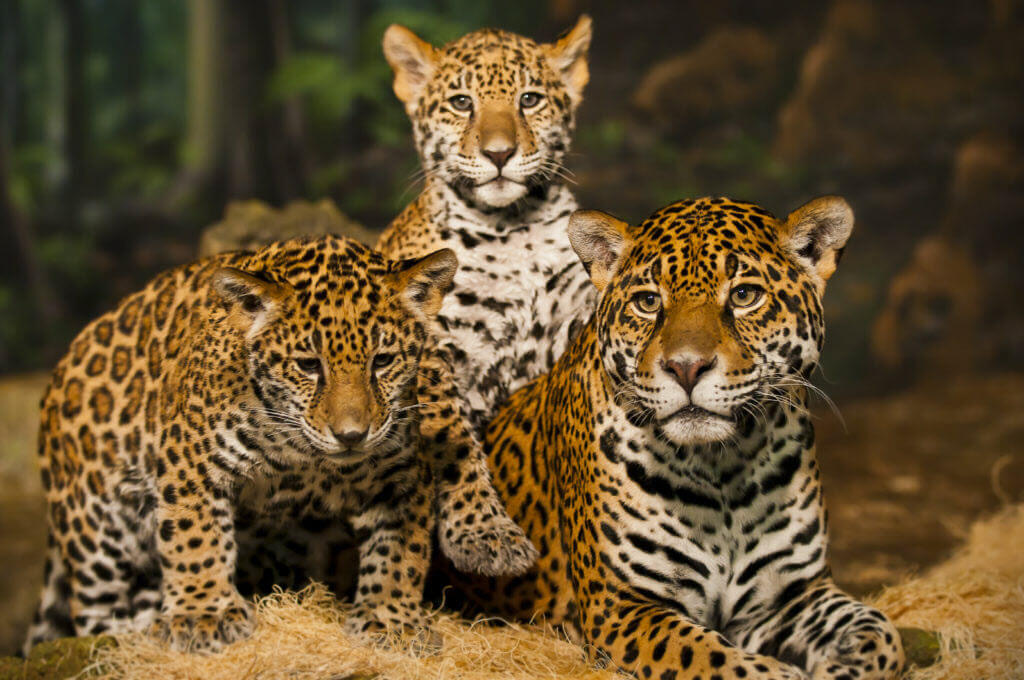
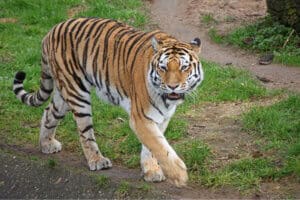
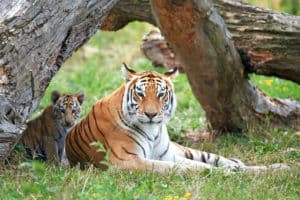
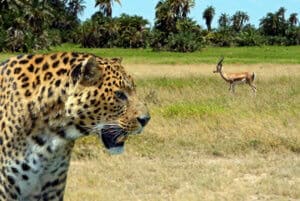

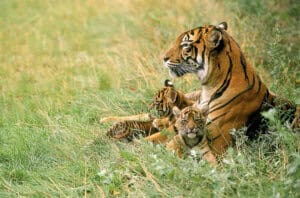
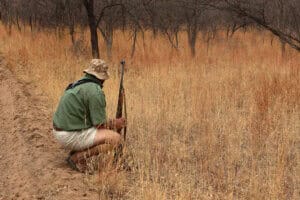
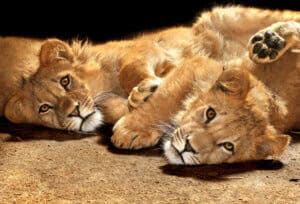
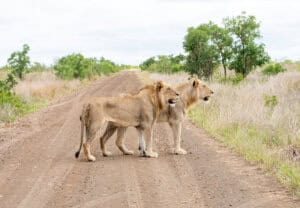
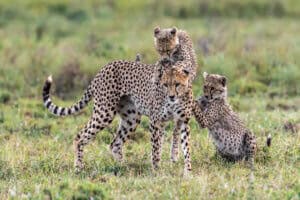


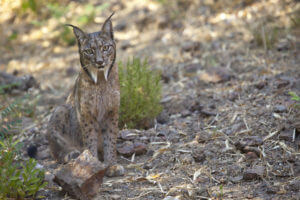




Beauty like poetry, thanks that’s why I come to social media. Big Cats Rule.
I live in western Kentucky. Also, no, I
am not crazy. We have really saw this big beautiful creature. About 4 to 5 years ago, 3 out of 4 us have seen this big blackish cat on our farm ,with circle-like rosettes (with the sun shining on it’s back) and with a crook on the end of a long, upward curved tail.
We saw it 3 times. Our neighbors have also seen it. Then, they worked on a bridge nearby. We haven’t seen it since. I believe there are more in the North American area than anyone knows!
After seeing that huge beautiful cat, I pray they’re sill around here!
According to a research paper published in 2016 (The Factors for the Extinction of Jaguars and Cougars in El Salvador), both the jaguar and cougar are considered extinct in El Salvador. “The jaguar (Panthera onca, Linnaeus 1758) and cougar (Puma concolor, Linnaeus 1771) are the largest cats in the Americas and are listed as uniquely extinct in El Salvador, Central America. The contributory factors for this event
are little understood and/or ignored.” Journal of Biodiversity, Bioprospecting and Development.
Are Jaguars found in El Salvador
Is there anything a normal person not so near the habitat of jaguars can do to help? I love cats and want to help.
I love cats, and jaguars are neat. Thank you for this information. 😉
With the death of Dr. Alan Rabinowitz, who is the recognized expert on Jaguars and who is he with?